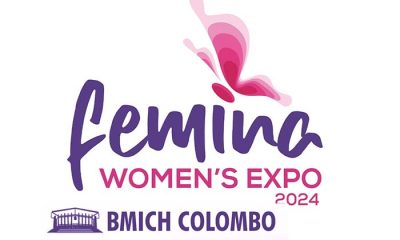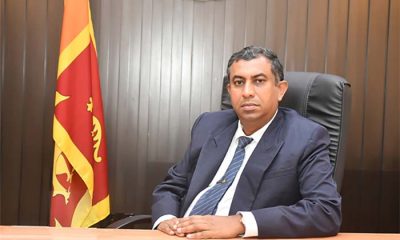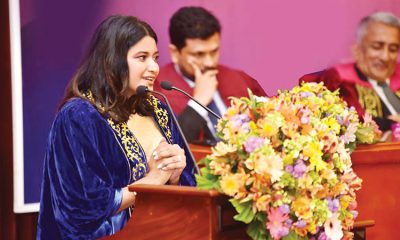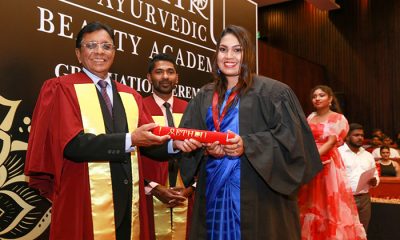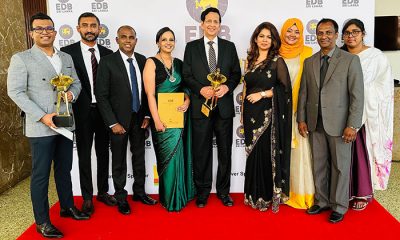Features
BMICH 50 years ago: Memories of the first international conference hosted there
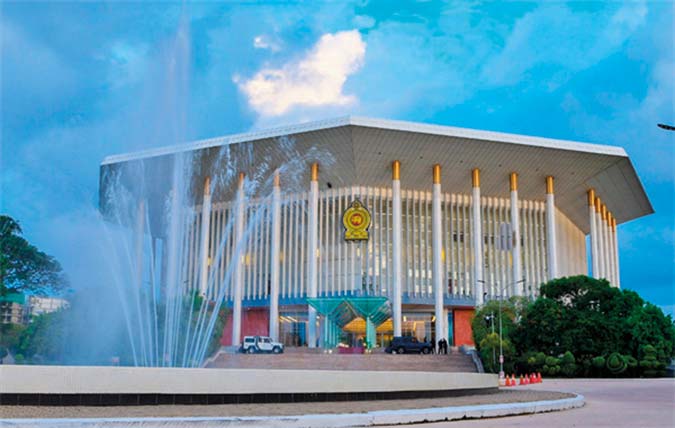
The BMICH was innaugurated 1n 1973. In 1974 it hosted the first and largest international conference held in Sri Lanka at that time. That was two years ahed of the Non-Aligned Summit in 1976. At this conference ECAFE’s name was changed to ESCAP. Mrs. Bandaranaike’s proposal for a World Fertilizer Fund was mooted at this conference. What follows is an extract from The Long Littleness of Life, a memoir by Leelananda De Silva.
The Economic Commission for Asia and the Far East, ECAFE (it changed its name in Colombo in 1974 to Economic and Social Commission for Asia and the Pacific, ESCAP), is the regional commission of the United Nations, located in Bangkok. When it was originally set up in the late 1940s, Colombo was the preferred choice for its location. The then government was not inclined to have this kind of international organization in Colombo at the time, as the quiet life of Colombo would have been disturbed.
Gamani Corea talks about this in his memoirs, saying it was a missed opportunity. Years later, in March 1974, the 30th annual sessions of ECAFE were held in Colombo at the Bandaranaike Memorial International Conference Hall (BMICH). I have enjoyed a long connection with ECAFE and ESCAP, beginning in 1972 lasting nearly 40 years, as a delegate from Sri Lanka, as a consultant to it, and later as one of its historians.
But my most important engagement with ECAFE and ESCAP was in March 1974, when I had the responsibility to organize the Annual Sessions in Colombo. I was the Secretary General of the Conference. This was the largest ever international Conference to be held in Colombo until that time and the first to be held at the newly constructed Bandaranike Memorial International Conference Hall (BMICH).
Organizing the 301 annual sessions was not plain sailing. The BMICH had just been completed, and the facilities there were meagre. While electricity, water supply and furniture were available, there were many other missing elements, and a lot of hard work was involved getting the BMICH ready for ECAFE.
Ten days before the Conference, we were getting a bit nervous and I requested Mrs. Bandaranaike to convene a meeting of high level officials to sort out the problems at the BMICH itself. She obliged and we had a productive meeting. I remember, among about 10 officials present, were D.B.I.P.S. Siriwardhana, Secretary of one of the relevant ministries, B.A. Jayasinghe, Municipal Commissioner, and Stanley Senanayake, the IGP.
Mrs. Bandaranaike’s intervention was brief. She told the officials that she wanted to make this conference a success and that it should be seen as a trial run for the Non Aligned Summit. She then said that she expects everyone there to cooperate with the Ministry of Planning. That meeting ended most of our problems.
One little incident is illustrative of the problems we had. On the morning of the opening of the Conference by Mrs. Bandaranaike, she rang me at home very early and said that she had been looking at the pictures of the hall where the sessions were to be held, appearing in the newspapers that day, and that there was no lectern for her to make her opening speech. We had missed this vital piece of equipment. We had to rush a lectern into the hall. This also illustrates Mrs. Bandaranaike’s powers of observation, and if not for her intervention, we would have looked foolish indeed.
I prepared Mrs. Bandaranaike’s speech for the Conference, in consultation with her. Its main thrust was to propose the establishment of a World Fertilizer Fund. She was anxious to develop a foreign economic policy which reflected the interests of the country and of other developing countries, prior to the Non Aligned Conference. It was to be pursued later at the World Food Conference in Rome in November 1974, leading to a UN General Assembly resolution on the establishment of an International Fertilizer Supply Scheme, and which led to its actual establishment.
The proposal was based on the premise that it is better for the developing countries to receive fertilizer aid than food aid, as fertilizers would enable many countries to expand agricultural production. There was a scarcity of fertilizer supplies at the time due to the oil crisis, and the prices had increased sharply. The proposal was based on Sri Lanka’s own experience and that of several other countries. The annual sessions adopted a resolution to study the proposal in depth.
Apart from this proposal of Sri Lanka, the other important decision of the Conference was to change its name from ECAFE to ESCAP. The term “Far East” appeared to some countries like Indonesia as colonial phraseology. J.B.P Maramis, from Indonesia had just taken over as Executive Secretary of ECAFE, and he was the man behind the change of name. I was to work closely with Maramis, in Colombo for the 30th annual sessions.
There were other aspects in Conference organization which come to mind. Nauru, the small Pacific island, rich in phosphates is a member of ESCAP. Its president attended the Conference and gave a cheque to Sri Lanka of US dollars 100,000 towards its costs. This was a generous contribution, as that almost covered the Sri Lankan costs in organizing this meeting. Those days the costs were modest in undertaking this type of venture.
Helvi Sipila, who was Finnish, was the assistant secretary general from the UN in New York representing the Secretary General at the Conference. She was going to be the Secretary General of the first UN Conference on Women to be held in Mexico later. She was anxious to meet Mrs. Bandaranaike for a private chat, and I accompanied her to have tea with the prime minister at her office (much later Helvi Sipila was to run for the post of president of Finland).
Then there was a protocol issue with one delegation, Bangladesh. Sri Lankan- Bangladesh relations were very touchy at this time. Nurul Islam, a leading Asian economist and • Vice Chairman of the Bangladesh Planning Commission was leading the delegation. He was not received at the airport as a minister, because he was not one. But he was upset and lodged a complaint to the effect that the office of Vice Chairman of the Planning Commission in Bangladesh was at ministerial level. Did we not know that the Vice Chairman of the Indian Planning Commission was a minister? Anyway, he had to be calmed down with an apology. Then there was another Sri Lankan minister who complained that MPs were not appropriately seated in the guest stalls, and that public servants had obtained precedence.
Before I end my reflections of these annual sessions, I must record here, the hard work that was put in by some of the members of the Planning Ministry who were involved in its organization. Wilfred Nanayakkara was a source of great assistance. Indrani Sri Chandrasekara, Chandra Rodrigo, M.S Sally, Upah Gunawardane and Heather Schumacher attended to various aspects in organizing this Conference.
Leaving behind what was one of the highlights of my relationship with ECAFE and ESCAP, there were other points of interaction with this organization in my seven years in the planning ministry. In April 1973, I attended the 29th annual sessions of ECAFE in Tokyo, as a delegate from Sri Lanka. Arthur Basnayake, the Sri Lankan Ambassador in Japan led the delegation, and Mane] Kannangara, (now Abeysekara), who was Sri Lanka’s Permanent Representative to ECAFE in Bangkok was the other member. It was a very happy delegation and we had a wonderful time in Tokyo.
The Prime Minister of Japan (Kakuei Tanaka) hosted a grand cherry blossom party at the Sinjuku gardens. At the Conference itself, there was a heartfelt farewell to U. Nyun, the Burmese Executive Secretary of ECAFE who had been there for over 10 years. J.B.P Maramis from Indonesia was appointed in his place. I remember that the news of the death of Dudley Senanayake reached us in Tokyo at that time.
There was a sideshow to the main annual sessions. This was the signing of the treaty establishing the Asian Clearing Union in Tokyo. The Governor of the Central Bank, Herbert Tennekoon was present for this occasion, and I was asked to assist him. He requested my help in drafting a speech, and he suggested to me that something about the gold standard should be included in his speech. I told him that the gold standard was now outmoded, and a reference to it will be out of place. He insisted on this and we decided on some harmless phraseology.
I had attended the preliminary meetings on the Asian Clearing Union in Bangkok, along with K. Gunaratnam (Gunam) and Hema de Zoysa, both from the Central Bank. Getting away from annual sessions, an ECAFE meeting I remember vividly was the one held in 1972 on the proposal to establish an Asian Reserve Bank (ARB). The ARB was to be some kind of a regional IMF, and at the Bangkok meeting the advisor to ECAFE on this subject was the famous economist, Robert Triffin, the father of the European monetary union project. It was fascinating to listen to him.
I feel that the Asian region missed a great opportunity in not proceeding with the ARB project. Forty years later, it might now be an appropriate time for it. ECAFE under U. Nyun, the Executive Secretary had been active in the 1960s and early 1970s in promoting regional cooperation. I was later to write the history of ECAFE/ESCAP for the UN intellectual history project.
Features
The heart-friendly health minister

by Dr Gotabhya Ranasinghe
Senior Consultant Cardiologist
National Hospital Sri Lanka
When we sought a meeting with Hon Dr. Ramesh Pathirana, Minister of Health, he graciously cleared his busy schedule to accommodate us. Renowned for his attentive listening and deep understanding, Minister Pathirana is dedicated to advancing the health sector. His openness and transparency exemplify the qualities of an exemplary politician and minister.
Dr. Palitha Mahipala, the current Health Secretary, demonstrates both commendable enthusiasm and unwavering support. This combination of attributes makes him a highly compatible colleague for the esteemed Minister of Health.
Our discussion centered on a project that has been in the works for the past 30 years, one that no other minister had managed to advance.
Minister Pathirana, however, recognized the project’s significance and its potential to revolutionize care for heart patients.
The project involves the construction of a state-of-the-art facility at the premises of the National Hospital Colombo. The project’s location within the premises of the National Hospital underscores its importance and relevance to the healthcare infrastructure of the nation.
This facility will include a cardiology building and a tertiary care center, equipped with the latest technology to handle and treat all types of heart-related conditions and surgeries.
Securing funding was a major milestone for this initiative. Minister Pathirana successfully obtained approval for a $40 billion loan from the Asian Development Bank. With the funding in place, the foundation stone is scheduled to be laid in September this year, and construction will begin in January 2025.
This project guarantees a consistent and uninterrupted supply of stents and related medications for heart patients. As a result, patients will have timely access to essential medical supplies during their treatment and recovery. By securing these critical resources, the project aims to enhance patient outcomes, minimize treatment delays, and maintain the highest standards of cardiac care.
Upon its fruition, this monumental building will serve as a beacon of hope and healing, symbolizing the unwavering dedication to improving patient outcomes and fostering a healthier society.We anticipate a future marked by significant progress and positive outcomes in Sri Lanka’s cardiovascular treatment landscape within the foreseeable timeframe.
Features
A LOVING TRIBUTE TO JESUIT FR. ALOYSIUS PIERIS ON HIS 90th BIRTHDAY

by Fr. Emmanuel Fernando, OMI
Jesuit Fr. Aloysius Pieris (affectionately called Fr. Aloy) celebrated his 90th birthday on April 9, 2024 and I, as the editor of our Oblate Journal, THE MISSIONARY OBLATE had gone to press by that time. Immediately I decided to publish an article, appreciating the untiring selfless services he continues to offer for inter-Faith dialogue, the renewal of the Catholic Church, his concern for the poor and the suffering Sri Lankan masses and to me, the present writer.
It was in 1988, when I was appointed Director of the Oblate Scholastics at Ampitiya by the then Oblate Provincial Fr. Anselm Silva, that I came to know Fr. Aloy more closely. Knowing well his expertise in matters spiritual, theological, Indological and pastoral, and with the collaborative spirit of my companion-formators, our Oblate Scholastics were sent to Tulana, the Research and Encounter Centre, Kelaniya, of which he is the Founder-Director, for ‘exposure-programmes’ on matters spiritual, biblical, theological and pastoral. Some of these dimensions according to my view and that of my companion-formators, were not available at the National Seminary, Ampitiya.
Ever since that time, our Oblate formators/ accompaniers at the Oblate Scholasticate, Ampitiya , have continued to send our Oblate Scholastics to Tulana Centre for deepening their insights and convictions regarding matters needed to serve the people in today’s context. Fr. Aloy also had tried very enthusiastically with the Oblate team headed by Frs. Oswald Firth and Clement Waidyasekara to begin a Theologate, directed by the Religious Congregations in Sri Lanka, for the contextual formation/ accompaniment of their members. It should very well be a desired goal of the Leaders / Provincials of the Religious Congregations.
Besides being a formator/accompanier at the Oblate Scholasticate, I was entrusted also with the task of editing and publishing our Oblate journal, ‘The Missionary Oblate’. To maintain the quality of the journal I continue to depend on Fr. Aloy for his thought-provoking and stimulating articles on Biblical Spirituality, Biblical Theology and Ecclesiology. I am very grateful to him for his generous assistance. Of late, his writings on renewal of the Church, initiated by Pope St. John XX111 and continued by Pope Francis through the Synodal path, published in our Oblate journal, enable our readers to focus their attention also on the needed renewal in the Catholic Church in Sri Lanka. Fr. Aloy appreciated very much the Synodal path adopted by the Jesuit Pope Francis for the renewal of the Church, rooted very much on prayerful discernment. In my Religious and presbyteral life, Fr.Aloy continues to be my spiritual animator / guide and ongoing formator / acccompanier.
Fr. Aloysius Pieris, BA Hons (Lond), LPh (SHC, India), STL (PFT, Naples), PhD (SLU/VC), ThD (Tilburg), D.Ltt (KU), has been one of the eminent Asian theologians well recognized internationally and one who has lectured and held visiting chairs in many universities both in the West and in the East. Many members of Religious Congregations from Asian countries have benefited from his lectures and guidance in the East Asian Pastoral Institute (EAPI) in Manila, Philippines. He had been a Theologian consulted by the Federation of Asian Bishops’ Conferences for many years. During his professorship at the Gregorian University in Rome, he was called to be a member of a special group of advisers on other religions consulted by Pope Paul VI.
Fr. Aloy is the author of more than 30 books and well over 500 Research Papers. Some of his books and articles have been translated and published in several countries. Among those books, one can find the following: 1) The Genesis of an Asian Theology of Liberation (An Autobiographical Excursus on the Art of Theologising in Asia, 2) An Asian Theology of Liberation, 3) Providential Timeliness of Vatican 11 (a long-overdue halt to a scandalous millennium, 4) Give Vatican 11 a chance, 5) Leadership in the Church, 6) Relishing our faith in working for justice (Themes for study and discussion), 7) A Message meant mainly, not exclusively for Jesuits (Background information necessary for helping Francis renew the Church), 8) Lent in Lanka (Reflections and Resolutions, 9) Love meets wisdom (A Christian Experience of Buddhism, 10) Fire and Water 11) God’s Reign for God’s poor, 12) Our Unhiddden Agenda (How we Jesuits work, pray and form our men). He is also the Editor of two journals, Vagdevi, Journal of Religious Reflection and Dialogue, New Series.
Fr. Aloy has a BA in Pali and Sanskrit from the University of London and a Ph.D in Buddhist Philosophy from the University of Sri Lankan, Vidyodaya Campus. On Nov. 23, 2019, he was awarded the prestigious honorary Doctorate of Literature (D.Litt) by the Chancellor of the University of Kelaniya, the Most Venerable Welamitiyawe Dharmakirthi Sri Kusala Dhamma Thera.
Fr. Aloy continues to be a promoter of Gospel values and virtues. Justice as a constitutive dimension of love and social concern for the downtrodden masses are very much noted in his life and work. He had very much appreciated the commitment of the late Fr. Joseph (Joe) Fernando, the National Director of the Social and Economic Centre (SEDEC) for the poor.
In Sri Lanka, a few religious Congregations – the Good Shepherd Sisters, the Christian Brothers, the Marist Brothers and the Oblates – have invited him to animate their members especially during their Provincial Congresses, Chapters and International Conferences. The mainline Christian Churches also have sought his advice and followed his seminars. I, for one, regret very much, that the Sri Lankan authorities of the Catholic Church –today’s Hierarchy—- have not sought Fr.
Aloy’s expertise for the renewal of the Catholic Church in Sri Lanka and thus have not benefited from the immense store of wisdom and insight that he can offer to our local Church while the Sri Lankan bishops who governed the Catholic church in the immediate aftermath of the Second Vatican Council (Edmund Fernando OMI, Anthony de Saram, Leo Nanayakkara OSB, Frank Marcus Fernando, Paul Perera,) visited him and consulted him on many matters. Among the Tamil Bishops, Bishop Rayappu Joseph was keeping close contact with him and Bishop J. Deogupillai hosted him and his team visiting him after the horrible Black July massacre of Tamils.
Features
A fairy tale, success or debacle

Sri Lanka-Singapore Free Trade Agreement
By Gomi Senadhira
senadhiragomi@gmail.com
“You might tell fairy tales, but the progress of a country cannot be achieved through such narratives. A country cannot be developed by making false promises. The country moved backward because of the electoral promises made by political parties throughout time. We have witnessed that the ultimate result of this is the country becoming bankrupt. Unfortunately, many segments of the population have not come to realize this yet.” – President Ranil Wickremesinghe, 2024 Budget speech
Any Sri Lankan would agree with the above words of President Wickremesinghe on the false promises our politicians and officials make and the fairy tales they narrate which bankrupted this country. So, to understand this, let’s look at one such fairy tale with lots of false promises; Ranil Wickremesinghe’s greatest achievement in the area of international trade and investment promotion during the Yahapalana period, Sri Lanka-Singapore Free Trade Agreement (SLSFTA).
It is appropriate and timely to do it now as Finance Minister Wickremesinghe has just presented to parliament a bill on the National Policy on Economic Transformation which includes the establishment of an Office for International Trade and the Sri Lanka Institute of Economics and International Trade.
Was SLSFTA a “Cleverly negotiated Free Trade Agreement” as stated by the (former) Minister of Development Strategies and International Trade Malik Samarawickrama during the Parliamentary Debate on the SLSFTA in July 2018, or a colossal blunder covered up with lies, false promises, and fairy tales? After SLSFTA was signed there were a number of fairy tales published on this agreement by the Ministry of Development Strategies and International, Institute of Policy Studies, and others.
However, for this article, I would like to limit my comments to the speech by Minister Samarawickrama during the Parliamentary Debate, and the two most important areas in the agreement which were covered up with lies, fairy tales, and false promises, namely: revenue loss for Sri Lanka and Investment from Singapore. On the other important area, “Waste products dumping” I do not want to comment here as I have written extensively on the issue.
1. The revenue loss
During the Parliamentary Debate in July 2018, Minister Samarawickrama stated “…. let me reiterate that this FTA with Singapore has been very cleverly negotiated by us…. The liberalisation programme under this FTA has been carefully designed to have the least impact on domestic industry and revenue collection. We have included all revenue sensitive items in the negative list of items which will not be subject to removal of tariff. Therefore, 97.8% revenue from Customs duty is protected. Our tariff liberalisation will take place over a period of 12-15 years! In fact, the revenue earned through tariffs on goods imported from Singapore last year was Rs. 35 billion.
The revenue loss for over the next 15 years due to the FTA is only Rs. 733 million– which when annualised, on average, is just Rs. 51 million. That is just 0.14% per year! So anyone who claims the Singapore FTA causes revenue loss to the Government cannot do basic arithmetic! Mr. Speaker, in conclusion, I call on my fellow members of this House – don’t mislead the public with baseless criticism that is not grounded in facts. Don’t look at petty politics and use these issues for your own political survival.”
I was surprised to read the minister’s speech because an article published in January 2018 in “The Straits Times“, based on information released by the Singaporean Negotiators stated, “…. With the FTA, tariff savings for Singapore exports are estimated to hit $10 million annually“.
As the annual tariff savings (that is the revenue loss for Sri Lanka) calculated by the Singaporean Negotiators, Singaporean $ 10 million (Sri Lankan rupees 1,200 million in 2018) was way above the rupees’ 733 million revenue loss for 15 years estimated by the Sri Lankan negotiators, it was clear to any observer that one of the parties to the agreement had not done the basic arithmetic!
Six years later, according to a report published by “The Morning” newspaper, speaking at the Committee on Public Finance (COPF) on 7th May 2024, Mr Samarawickrama’s chief trade negotiator K.J. Weerasinghehad had admitted “…. that forecasted revenue loss for the Government of Sri Lanka through the Singapore FTA is Rs. 450 million in 2023 and Rs. 1.3 billion in 2024.”
If these numbers are correct, as tariff liberalisation under the SLSFTA has just started, we will pass Rs 2 billion very soon. Then, the question is how Sri Lanka’s trade negotiators made such a colossal blunder. Didn’t they do their basic arithmetic? If they didn’t know how to do basic arithmetic they should have at least done their basic readings. For example, the headline of the article published in The Straits Times in January 2018 was “Singapore, Sri Lanka sign FTA, annual savings of $10m expected”.
Anyway, as Sri Lanka’s chief negotiator reiterated at the COPF meeting that “…. since 99% of the tariffs in Singapore have zero rates of duty, Sri Lanka has agreed on 80% tariff liberalisation over a period of 15 years while expecting Singapore investments to address the imbalance in trade,” let’s turn towards investment.
Investment from Singapore
In July 2018, speaking during the Parliamentary Debate on the FTA this is what Minister Malik Samarawickrama stated on investment from Singapore, “Already, thanks to this FTA, in just the past two-and-a-half months since the agreement came into effect we have received a proposal from Singapore for investment amounting to $ 14.8 billion in an oil refinery for export of petroleum products. In addition, we have proposals for a steel manufacturing plant for exports ($ 1 billion investment), flour milling plant ($ 50 million), sugar refinery ($ 200 million). This adds up to more than $ 16.05 billion in the pipeline on these projects alone.
And all of these projects will create thousands of more jobs for our people. In principle approval has already been granted by the BOI and the investors are awaiting the release of land the environmental approvals to commence the project.
I request the Opposition and those with vested interests to change their narrow-minded thinking and join us to develop our country. We must always look at what is best for the whole community, not just the few who may oppose. We owe it to our people to courageously take decisions that will change their lives for the better.”
According to the media report I quoted earlier, speaking at the Committee on Public Finance (COPF) Chief Negotiator Weerasinghe has admitted that Sri Lanka was not happy with overall Singapore investments that have come in the past few years in return for the trade liberalisation under the Singapore-Sri Lanka Free Trade Agreement. He has added that between 2021 and 2023 the total investment from Singapore had been around $162 million!
What happened to those projects worth $16 billion negotiated, thanks to the SLSFTA, in just the two-and-a-half months after the agreement came into effect and approved by the BOI? I do not know about the steel manufacturing plant for exports ($ 1 billion investment), flour milling plant ($ 50 million) and sugar refinery ($ 200 million).
However, story of the multibillion-dollar investment in the Petroleum Refinery unfolded in a manner that would qualify it as the best fairy tale with false promises presented by our politicians and the officials, prior to 2019 elections.
Though many Sri Lankans got to know, through the media which repeatedly highlighted a plethora of issues surrounding the project and the questionable credentials of the Singaporean investor, the construction work on the Mirrijiwela Oil Refinery along with the cement factory began on the24th of March 2019 with a bang and Minister Ranil Wickremesinghe and his ministers along with the foreign and local dignitaries laid the foundation stones.
That was few months before the 2019 Presidential elections. Inaugurating the construction work Prime Minister Ranil Wickremesinghe said the projects will create thousands of job opportunities in the area and surrounding districts.
The oil refinery, which was to be built over 200 acres of land, with the capacity to refine 200,000 barrels of crude oil per day, was to generate US$7 billion of exports and create 1,500 direct and 3,000 indirect jobs. The construction of the refinery was to be completed in 44 months. Four years later, in August 2023 the Cabinet of Ministers approved the proposal presented by President Ranil Wickremesinghe to cancel the agreement with the investors of the refinery as the project has not been implemented! Can they explain to the country how much money was wasted to produce that fairy tale?
It is obvious that the President, ministers, and officials had made huge blunders and had deliberately misled the public and the parliament on the revenue loss and potential investment from SLSFTA with fairy tales and false promises.
As the president himself said, a country cannot be developed by making false promises or with fairy tales and these false promises and fairy tales had bankrupted the country. “Unfortunately, many segments of the population have not come to realize this yet”.
(The writer, a specialist and an activist on trade and development issues . )


